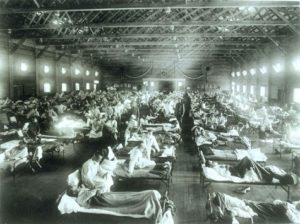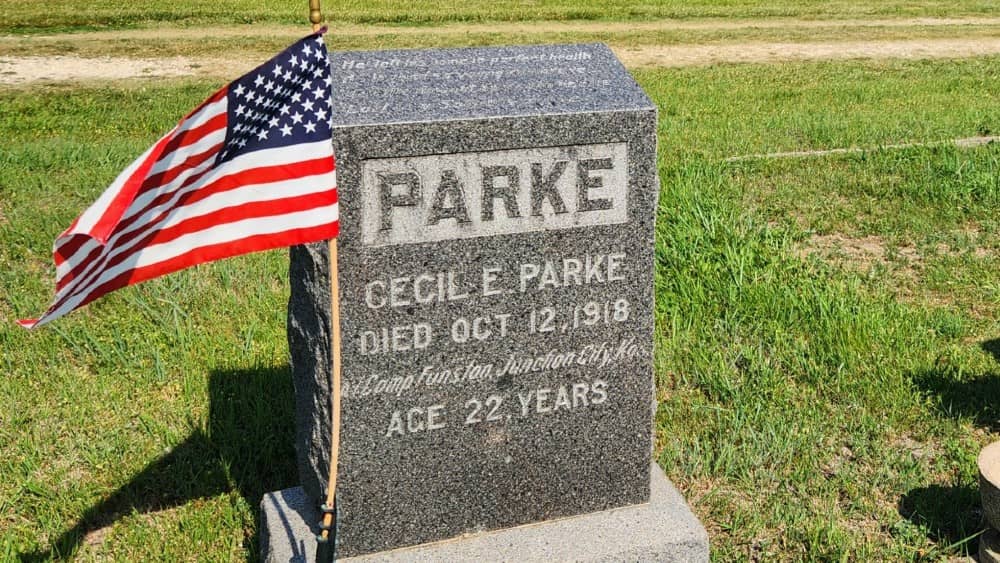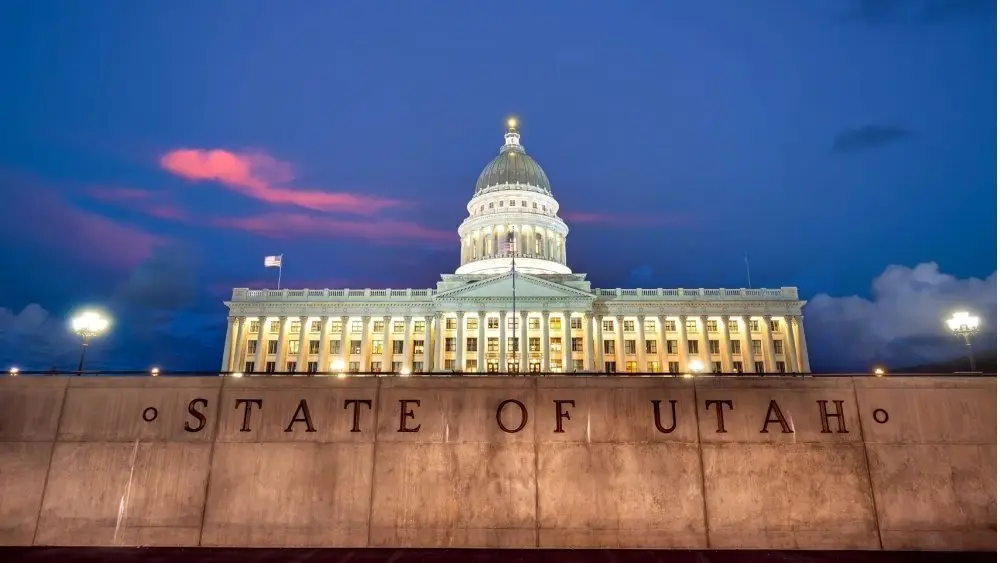Every year my family visits small cemeteries across Kansas on Memorial Day. This year we went to the Old Fairview Cemetery and the Green Valley Cemetery near Furley, KS. I was struck by a modern looking stone for a soldier named Cecil E. Parke. I noticed that his stone said he died at Camp Funston (now Fort Riley) here in Kansas. What caught me was the date – 1918. On the top of the stone was this heartbreaking inscription:
“He left his home in Perfect health
he looked so young and brave.
We little thought how soon he’d be
laid in a soldier’s grave”
The reason 1918 stood out to me is that was the year the Spanish Flu ravaged Camp Funston. American combat deaths in World War I totaled over 53,000, but about 45,000 American Soldiers died of influenza and related pneumonia by the end of 1918.
That’s exactly what happened to Cecil Parke. With a Newpapers.com subscription and by using Ancestry.com, I was able to put his story together. He was born in June of 1896 near Fredonia and at some point his family moved to Furley here in Sedgwick Country.
I found his draft registration dated June 1918 in a military database. A Wichita Beacon story says he reported to Camp Funston early in September. His obituary appeared in the Fredonia Daily Herald on October 14th of 1918. That means he was likely stricken quickly upon arrival. The paper reports that he had influenza that progressed to pneumonia. When he died he was, “just a little past 22 years of age.”
On March 4, 1918, the first influenza cases were identified at Camp Funston. Within three weeks, 1,100 of the 56,222 troops at the camp were sick. The virus spread because men were constantly moving among the Army’s camps all across the country.

(Sick soldiers at Camp Funston)
According to a 2005 book “The Great Influenza,” many medical historians believe that Haskell County, Kansas likely helped launch the virus onto the world stage with the US Army moving it along. Read more about the role of Camp Funston in the global pandemic here.
Did the Spanish Flu Start In Kansas?
Cecil enlisted and never had the opportunity to see action. A vicitm of one of the largest pandemics ever. World War I, claimed 20 million lives. The flu pandemic (known as the Spanish Flu) is estimated to have killed 50 million people. One of those casulties was a local boy from a small Kansas community.
Cecil Earl Clarke
32nd Division
Company 164th
Depot Brigade
(that’s how the paper printed it)
We thank you for your willingness to serve.
Sources:
ancestry.com
newspapers.com
Wichita Beacon story dated 10/17/1918
Fredonia Herald sotry dated 10/14/1918
Camp Funston Wikipedia page
162nd Depot Brigade Wikipedia page
nationalguard.mil
Photo National Archives
Photo: Justin Case








